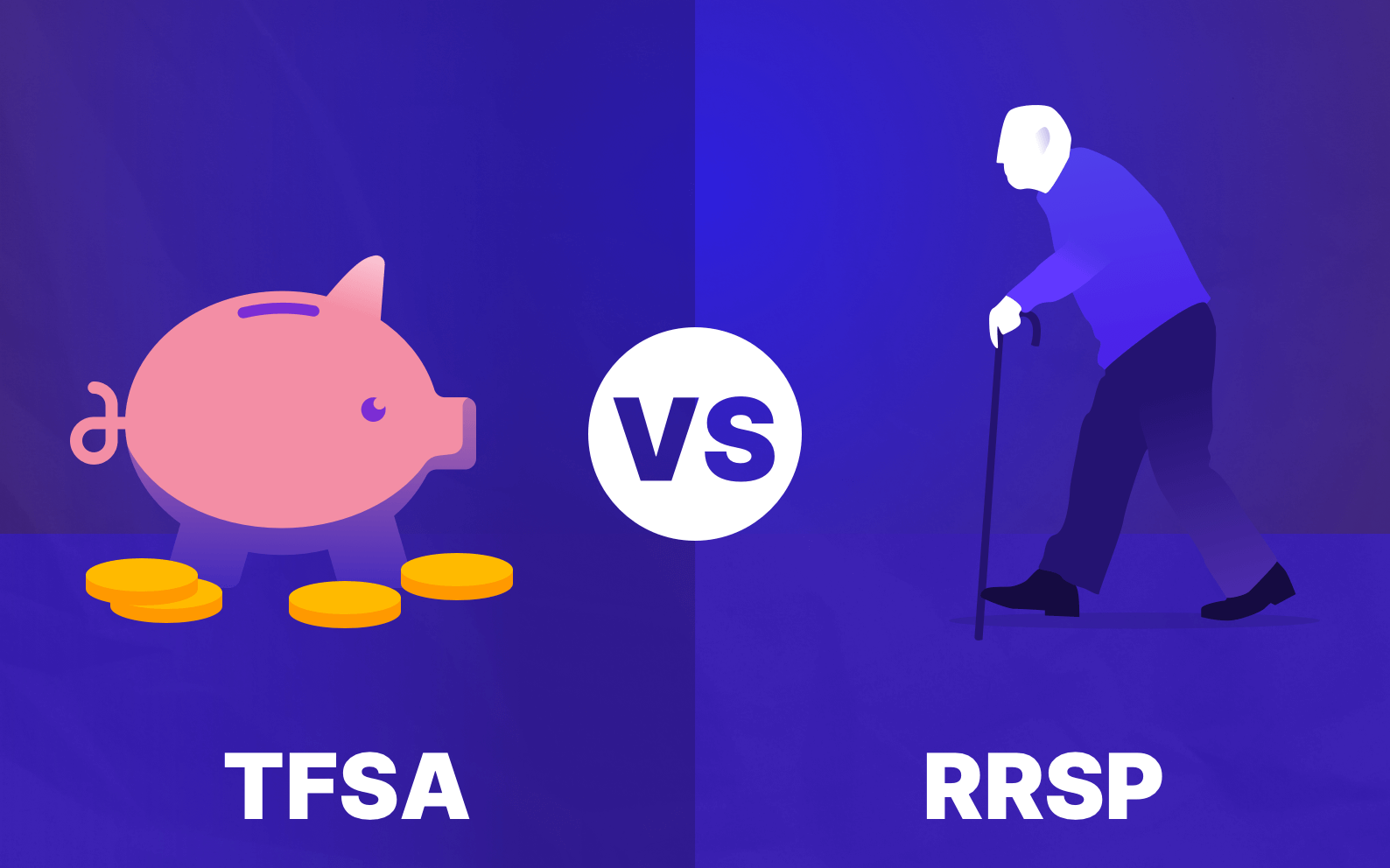As a Canadian, you are probably torn between going with a TFSA and RRSP account for savings. Both are government-registered account types that allow you to save money in a tax-efficient way but they differ as to “how”.
Understanding the differences between them will make your decision much easier. That’s why in this post, I will outline them for you and help you choose the account that best fits your needs. Let’s end the TFSA vs RRSP debate once and for all…
TFSA vs RRSP: Comparison Table
| TFSA | RRSP | |
| Ideal for | Short-term goals | Long-term goals |
| Tax Benefit | Tax-free dividends/Withdrawals | Tax-deductible contributions |
| Contribution Limit | $6,000 (2021) | 18% of last year’s income or $27,830 (2021) |
| Contribution Room | Unused limits and withdrawals are carried forward | Unused limits are carried forward, but not withdrawals |
| Expiration | Can be used indefinitely | You must withdraw or convert the account to a Registered Retirement Income Fund (RRIF) by December 31 of the year you turn 71 |
| Over-Contribution Penalty | 1% tax on the excess funds per month | 1% tax on the excess funds per month |
TFSA Explained
The most important advantage TFSA accounts have is that they allow your savings to grow tax-free. You won’t have to pay taxes on dividends/withdrawals and you will, therefore, enjoy more liquidity than the usual retirement accounts offer.
You can use TFSA to save up to $6,000 per year (as of 2021). If you don’t max out your limit, the unused contribution room will be carried forward even if you withdraw some money.
For instance, if you have contributed $5,000 but you later withdrew $1,000 during a year, your contribution limit for the next year will be $8,000 (contribution room: $6,000 – $5,000 + $1,000 = $2,000 for the first year + $6,000 for the second)
By the way, an easy way to keep track of your contributions is to use Wealthica’s Registered Contributions widget. If you earn dividends, Wealthica has an add-on to track them as well
Sign up to Wealthica for free to get started!
Another great advantage over many account types is that you can use the TFSA for as long as you like. You’ll never be forced to stop contributing and start withdrawing.
RRSP Explained
The main advantage that RRSP accounts enjoy is tax-deductive contributions. In other words, you can subtract the amount of your RRSP contributions each year from your taxable income.
As for the contribution limit, it is $27,830 per year (as of 2021). Just bear in mind that you can’t contribute more than 18% of your previous-year annual income.
Contribution rooms of unused limits are also carried forward, but withdrawn amounts aren’t.
Now, you cannot use an RRSP indefinitely, but up until December 31 of the year you turn 71.
However, you will have two options then. First, you can convert it into a Registered Retirement Income Fund (RRIF) which allows you to receive periodic payments. Second, you can withdraw your fund as a lump sum.
TFSA vs RRSP: Head to head
TFSA is a relatively new short-term savings account type. It will serve you best for saving money to reach short-term goals such as buying a new house or a car.
RRSP is a much older and more long-term-oriented account type. It’s ideal for retirement savings and long-term goals.
That’s because of their taxation/contribution structures we outlined above.
Since with a TFSA you won’t have to pay taxes on withdrawals, it’s ideal for short-term savings goals. RRSP doesn’t have that feature but a high-income earner will benefit from it more as it has a greater contribution-room and contributions will be tax-deductible.
Should You Have Both a TFSA and RRSP Account?
You can absolutely choose “option C” and go with both TFSA and RRSP. This will give you the best of both worlds; liquidity and retirement. But most importantly, it will allow you to contribute much more towards retirement.
A combination is also ideal for entrepreneurs and business owners who have unpredictable incomes. The idea is that it will allow you to contribute to your RRSP in a high tax-bracket year and to a TFSA in a low-income year.
This way, you enjoy both the benefit of paying less in taxes when your income is high and the advantage of having your contributions grow tax-free when it’s low.
Do All Banks Offer TFSA and RRSP accounts?
The most prominent Canadian banks offer TFSA and RRSP accounts. Just make sure that you take more factors into consideration before you go with any of them; such as banking fees, cheques, ATM charges, debit cards, etc.
And to make your financial life easier, consider adding your account to Wealthica and track your net worth more effectively. Wealthica supports big Canadian banks like RBC, NBC, and Wealthsimple, which all offer TFSA and RRSP accounts.
The information you provide is bank-level encrypted and SOC 2 compliant. And it’s also completely free to use!
Sign up to Wealthica and get a hold of your finances today…

